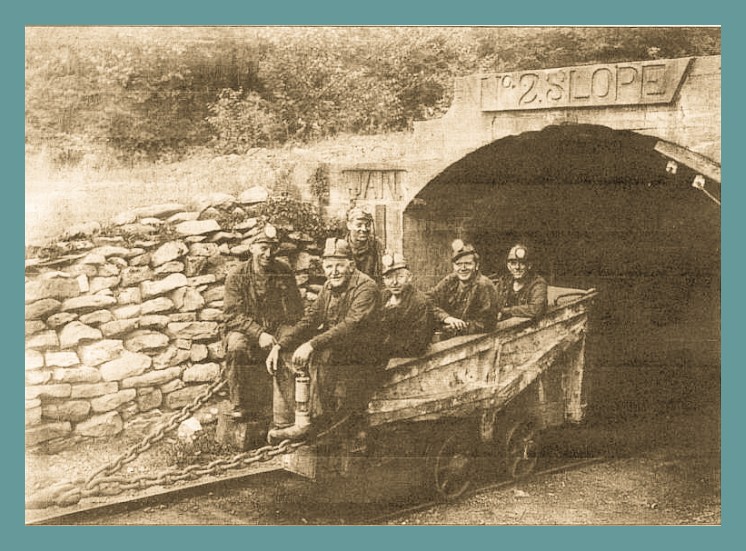A group of six miners pictured at the No. 2 slope entrance of the Big Mountain Colliery, located just south of Shamokin, Northumberland County, Pennsylvania.
From a series of articles that appeared in the Pottsville Republican and Herald in 1997:
The Big Mountain Colliery was located 1.5 miles south of Shamokin.
The original opening was a drift driven west in 1837 on the Mammoth Vein by Jacob Mowry, who mined the drift to 1840. He then suspended mining, probably due to the railroad being damaged in 1839 by the first locomotive placed in service.
In 1845, Sheff & Black reopened the drift, continuing the mining until 1856, when they failed and the lease was assigned to Bird, Douty & John, who continued operating the colliery to 1863, when they failed. After adjusting their financial affairs, they continued mining until 1867.
In 1867, J. Langdon & Company, who prior to this mined several drifts known as the Kirkam, Harper & Lawton Drifts, began mining on the Buck Ridge side of the colliery. In 1869, it opened the Mahanoy Drifts, mining them in addition to the Kirkham Drifts to 1873.
In 1873, Edward Patterson, Llewellyn & Company leased the colliery and continued mining of the many drifts, the Kirkam, Harper and Lawton being finished and the company robbing the pillars in 1875.
In 1878, the Mahanoy Drifts were extensively mined. The No. 1 Drift was driven 6,600 feet, the No. 2 Drift 4,500 feet, the No. 3 Drift 3,600 feet, the No. 1 Blacksmith Drift 4,800 feet, and the No. 2 Blacksmith Drift 1,500 feet.
In 1881, they sank the No. 1 slope 429 feet on the South Dip Bottom Split Mammoth Vein to the first level and erected two hoisting engines of 60 horsepower each. Patterson & Llewellyn continued operating the colliery to 1886, when the Philadelphia & Reading Coal & Iron Company came into possession after making improvements and sinking the Top Split Mammoth Vein No. 2 slope 720 feet. The colliery was then made a section of the Henry Clay Colliery.
In 1903, the No. 1 slope was extended 300 feet for a total length of 730 feet.
In 1919, they drove a tunnel from the foot of the No. 2 slope south across the basin to the North Dip Lykens Valley vein.
The Philadelphia & Reading Coal & Iron Company continued operating the colliery to January 1934, when all pumping was suspended and the colliery abandoned to fill with water to the surface.
The total shipment from the Big Mountain Colliery was 2,442,806 tons of coal to 1886, when the tonnage was included with Henry Clay Colliery shipments.
_______________________________________________
Article by Frank Blase, Historian, Reading Anthracite Company Historical Library, Pottsville Republican & Herald, June 14, 1997. Obtained from Newspapers.com.
Corrections and additional information should be added as comments to this post.
